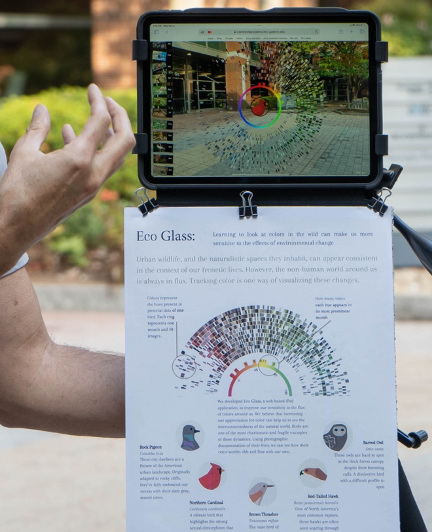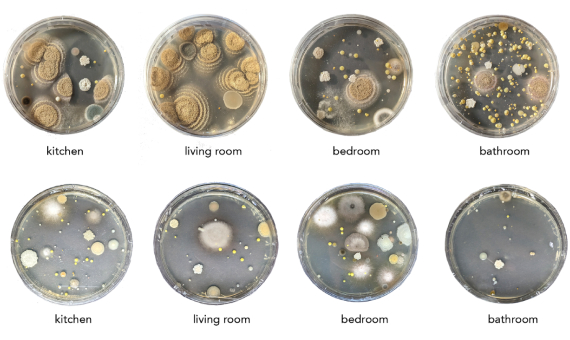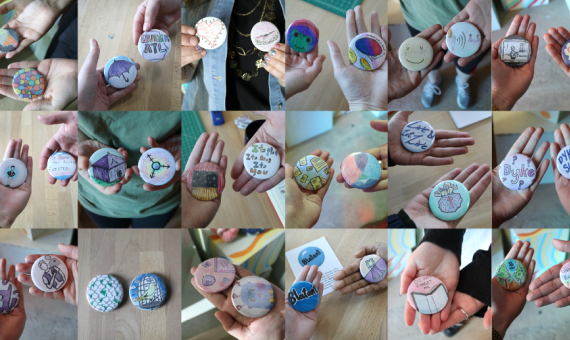Pigeon Glass: An augmented-reality inquiry into the color data of eBird

Team: Yanni Loukissas, Shruti Vedula, Emily Weigel, and Michael Zhou
Pigeon Glass is an augmented-reality data visualization developed for the Apple iPad, which uses color data extracted from photos in eBird: a collective database of over 100 million bird sightings. The application, written in p5.js (a JavaScript library) works like an interactive applique, layered over the live video feed of the iPad’s built-in camera. This is work undertaken by a small, interdisciplinary team of faculty and students drawn together by a shared interest in exploring the educational potential of creating local, augmented-reality data visualization projects, as an alternative to the use of generic platforms, such as “Google Glass.” We have found that creating and using local lenses to explore the environment can help students think critically about more-than-human relationships.
For Pigeon Glass, we leveraged abundant photographic documentation on local birds—rock pigeons, brown thrashers, northern cardinals, red-tailed hawks, among others—to help students understand the more-than-human significance of color on our campus. For example, Pigeon Glass helped students see how environmental changes due to both global climate shifts and local development projects can make life difficult for birds that rely on color to hide from predators or to be noticed by potential mates. Our research draws on a situated analysis conducted for two educational workshops. The findings from these workshops reveal the strengths and limitations of Pigeon Glass, as well as the broader significance of creating augmented-reality data projects in the context of education about more-than-human relationships.
Exploring Mold Data through Creative Material Practices
Sylvia Janicki
In this project, Sylvia explores different modes of sensing mold and what different forms of mold “data” tell us about our environment, bodies, and how we exist in relation. The project brings together disability theory and more-than-human scholarship through my first-person encounters with mold as someone living with environmental sensitivities, specifically, an intolerance to mycotoxins produced by some household molds. Sylvia draws from and juxtaposes various data sets about mold, both public and personal, to reflect on the ways we detect, measure, and make sense of these living, heterogenous, more-than-human entities that inhabit the intimate spaces of our bodies and homes. She unpacks how different data sets open new questions, uncertainties, and tensions of living with mold, transforming relationships to the home and illuminating larger implications of our desire to control bodies and environments. In response, she creates alternative data forms and artifacts that foreground embodied, relational, and situated understandings of mold while exploring the role of creative material practices in representing critical, entangled and non-linear environmental relations.

Buttons and Kurios

Alexandra Riggs
The ongoing “Buttons and Kurios” Studies explore how participatory crafting with technology (in this case making buttons that tell stories) influences participants’ reflections on queer history and shared queer experiences. Button Portraits is an ongoing research project where participants can listen to queer oral histories by tangibly interacting with archival ephemera (i.e. buttons). Kurios is a system developed by Matthew Mosher, a collaborator on this project, that enables oral histories to be embedded in archival objects, using NFC read and write capabilities. Button Portraits uses the Kurios system to invite participants to make their own archival buttons, using drawing and collage techniques, and tag them with their own oral histories, which are recorded during the study.
scholarship
Blurb / Gallery Set
